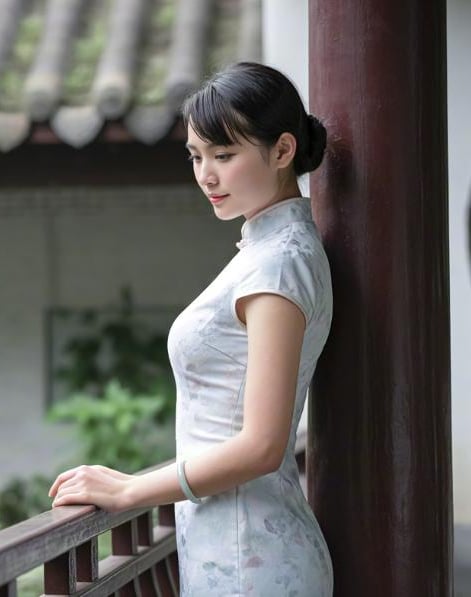Can Non-Chinese Wear Qipao? A Dialogue on Cultural Identity and Fashion Freedom
Cheongsam, a traditional Chinese dress that originated in the early 20th century, has now broken through regional restrictions and become a global fashion favorite.
QIPAO KNOWLEDGE
5/29/20252 min read


The Qipao: From Ethnic Attire to a Global Symbol
The qipao’s birth is itself a tale of cultural fusion. Blending Manchu bannerwear with Western tailoring, it evolved into a symbol of female emancipation in Republican-era Shanghai. Today, it frequently appears on Hollywood red carpets and in luxury brands like Dior and Prada, serving as a testament to its universal appeal. This cross-border popularity has long surpassed its “Chinese-exclusive” label, morphing into a shared global aesthetic.
Examples:
At the 2015 Met Gala, actress Diane Kruger wore a modern qipao, sparking Western media discussions on “Eastern aesthetics.”
Yves Saint Laurent’s 1977 “China Collection” integrated qipao elements into haute couture, hailed by The New York Times as “a dialogue between Eastern and Western aesthetics.”
The Appropriation Debate: When Fabric Becomes a Battleground
Critics argue:
The qipao carries China’s modern historical memory. Non-Chinese wearers risk diluting its cultural context, reducing it to a commercialized “exotic” prop. Brands combining qipao with dragon motifs or mahjong tiles, for instance, have faced accusations of perpetuating “Orientalist” stereotypes.
Advocates counter:
Clothing is, by nature, a fluid cultural vessel. Japanese kimonos and Indian saris have similarly undergone localized reinterpretations globally; the qipao’s internationalization is a sign of cultural vitality. The crux lies in whether wearers approach it with respect, not exploitation.
Solutions: From “Can They Wear It?” to “How Should They Wear It?”
Grasping Cultural Context
Historical Layer: The qipao’s evolution intertwines with Chinese women’s liberation; details like high slits and frog buttons embody era-specific symbolism.
Symbolic Layer: Traditional qipao fabrics (e.g., silk) and motifs (e.g., ink paintings) reflect Eastern philosophies like “intentional emptiness”.
Avoid Pitfalls: Refrain from mixing qipao with religious symbols (e.g., Buddhist patterns) or trivializing it in entertainment contexts (e.g., Halloween costumes).
Redefining Stereotypes
Design Innovation: British label Ms MIN reimagined the qipao as sleeveless minimalist dresses, earning praise from Vogue.
Contextual Reset: Non-Chinese individuals can wear adapted qipao at formal events like graduations or art exhibitions, moving beyond “Chinatown caricatures.”
Supporting Original Creators
Purchase from Chinese independent designers (e.g., SHUSHU/TONG, Museum of Friendship) to honor cultural authenticity and sustain craft traditions.
Cultural Ownership in a Globalized World
Culture knows no absolute borders. When African designers craft qipao from wax-printed fabrics or Latin American dancers fuse it with flamenco, these cross-cultural experiments affirm the garment’s vitality. The key lies in:
Equal Exchange: Treating the qipao as a “dialogue partner,” not a “conquered object.”
Giving Back: Supporting Chinese artisans through philanthropy, avoiding one-sided “cultural mining.”
Conclusion: The Qipao’s Future, Reborn in Flux
The debate over non-Chinese wearing qipao mirrors broader questions of cultural identity in globalization. Perhaps the focus should shift from “can they?” to “how?”—approaching it with reverence and creativity. When a qipao appears in both Shanghai’s alleyways and Paris’s opera houses, it becomes a universal language. This, perhaps, is the dream of its early designers: to let Eastern beauty shine for all humanity.
The qipao, a traditional Chinese garment born in the early 20th century, has transcended its geographical origins to become a global fashion icon. With its fluid silhouette and Eastern elegance, it now graces international runways and red carpets. Yet, when non-Chinese individuals don the qipao, debates arise: Is this cultural appreciation, or appropriation? The answer lies within the garment’s folds, waiting to be ironed out and reinterpreted.


